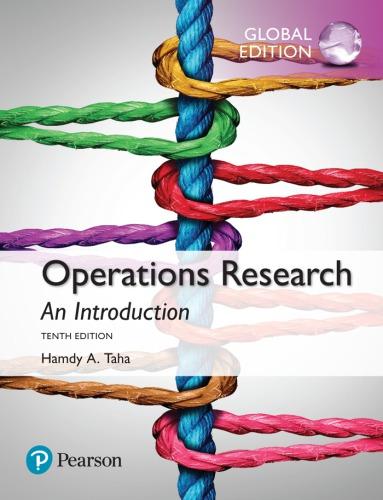A company produces two products, A and B. The unit revenues are $2 and $3, respectively. Two
Question:
A company produces two products, A and B. The unit revenues are $2 and $3, respectively.
Two raw materials, M1 and M2, used in the manufacture of the two products have daily availabilities of 8 and 18 units, respectively. One unit of A uses 2 units of M1 and 2 units of M2, and 1 unit of B uses 3 units of M1 and 6 units of M2.
(a) Determine the dual prices of M1 and M2 and their feasibility ranges.
(b) Suppose that 2 additional units of M1 can be acquired at the cost of 25 cents per unit.
Would you recommend the additional purchase?
(c) What is the most the company should pay per unit of M2?
(d) If M2 availability is increased by 3 units, determine the associated optimum revenue.
*3-64. Wild West produces two types of cowboy hats. A Type 1 hat requires twice as much labor time as a Type 2. If all the available labor time is dedicated to Type 2 alone, the company can produce a total of 400 Type 2 hats a day. The respective market limits for the two types are 150 and 200 hats per day. The revenue is $8 per Type 1 hat and $5 per Type 2 hat.
(a) Use the graphical solution to determine the number of hats of each type that maximizes revenue.
(b) Determine the dual price of the production capacity (in terms of the Type 2 hat) and the range for which it is applicable.
(c) If the daily demand limit on the Type 1 hat is decreased to 120, use the dual price to determine the corresponding effect on the optimal revenue.
(d) What is the dual price of the market share of the Type 2 hat? By how much can the market share be increased while yielding the computed worth per unit?
Step by Step Answer:







